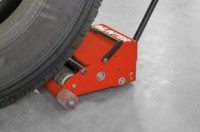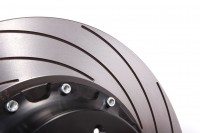Russian light-vehicle sales plummet 42.5%
There is chaos in the Russian light vehicle market, with some of the fastest contractions on record. The Russian light-vehicle market posted a the highest rate of monthly contraction since the accelerated decline of 2009 of 42.5 per cent year-on-year to 139,850 units, according to the latest data set released by the Association of European Businesses (AEB).
The chairman of the AEB’s vehicle manufacturers committee blamed the pull-forward effect of the government’s scrappage scheme and the heavy price inflation. The latter is no doubt a bigger reason for the collapse as the general macroeconomic environment in Russia continues to deteriorate alarmingly as the rouble weakens and sanctions bite.
The bad news follows a similar bad start to the year, with what was described as an “auto market crash” in the first two months of 2015 too.
Analysts say there is little prospect of the general economic environment improving in the short term and the recent, bold decision by GM to abandon Russia as a volume, full range car company, shows the pessimism about the short-and medium-term prospects of the Russian market.
Meanwhile IHS Automotive analysts offered their perspective. The ABE figures mean Russian light vehicle year-to-date sales are down 36.3 per cent year-on-year for the first quarter of the year with a figure for the period of 383,691 units.
AvtoVAZ’s Lada brand actually fared better than the overall market in March which has widely been the trend in recent months as a result of its cars having a higher percentage of scrappage scheme aided purchases than foreign OEMs, and their lower price point meaning they benefit more as a percentage from the scheme. The company’s sales fell by 26 per cent in March, which was significantly below the overall market fall, to 27,423 units. Year-to-date sales were down by 25 per cent year-on-year in comparison to the overall dip of 36.3 per cent during the quarter. Lada’s March results were helped by the very strong performance of the best-selling Granta, which benefited from a very high percentage of scrappage sales. In March sales of the Granta dipped by 520 units to 12,458 units, while year-to-date sales fell from 32,493 units to 30,710 units.
Second-placed brand Hyundai also bucked the wider trend with a markedly smaller, but still significant, 15 per cent year-on-year fall to 13,901 units. In the first two months of the year Hyundai had done well, thanks to continuing good sales of the Solaris and other models, to keep the decline during the first quarter to 4 per cent year-on-year.
The biggest faller in sales percentage terms of the top 10 brands in March was VW which was down 57 per cent year during the month to 6,150 units, dragging overall volumes down by 47 per cent year-on-year to 18,119 units.
However, Daimler’s Mercedes-Benz brand maintained its very strong recent performance with sales falling just 3 per cent year-on-year to 4,015 units, with the brand maintaining growth of 9 per cent year-on-year to 11,341 units for the third quarter, largely thanks to the strong start in the market of the GLA-Class which was only being launched at this point last year, and the new C-Class.
All this points to a strangely polarised new car parc made up of Ladas and Hyundais at one end and Mercedes at the other. It there also points to similarly polarised replacement tyre market for these marques.




Comments